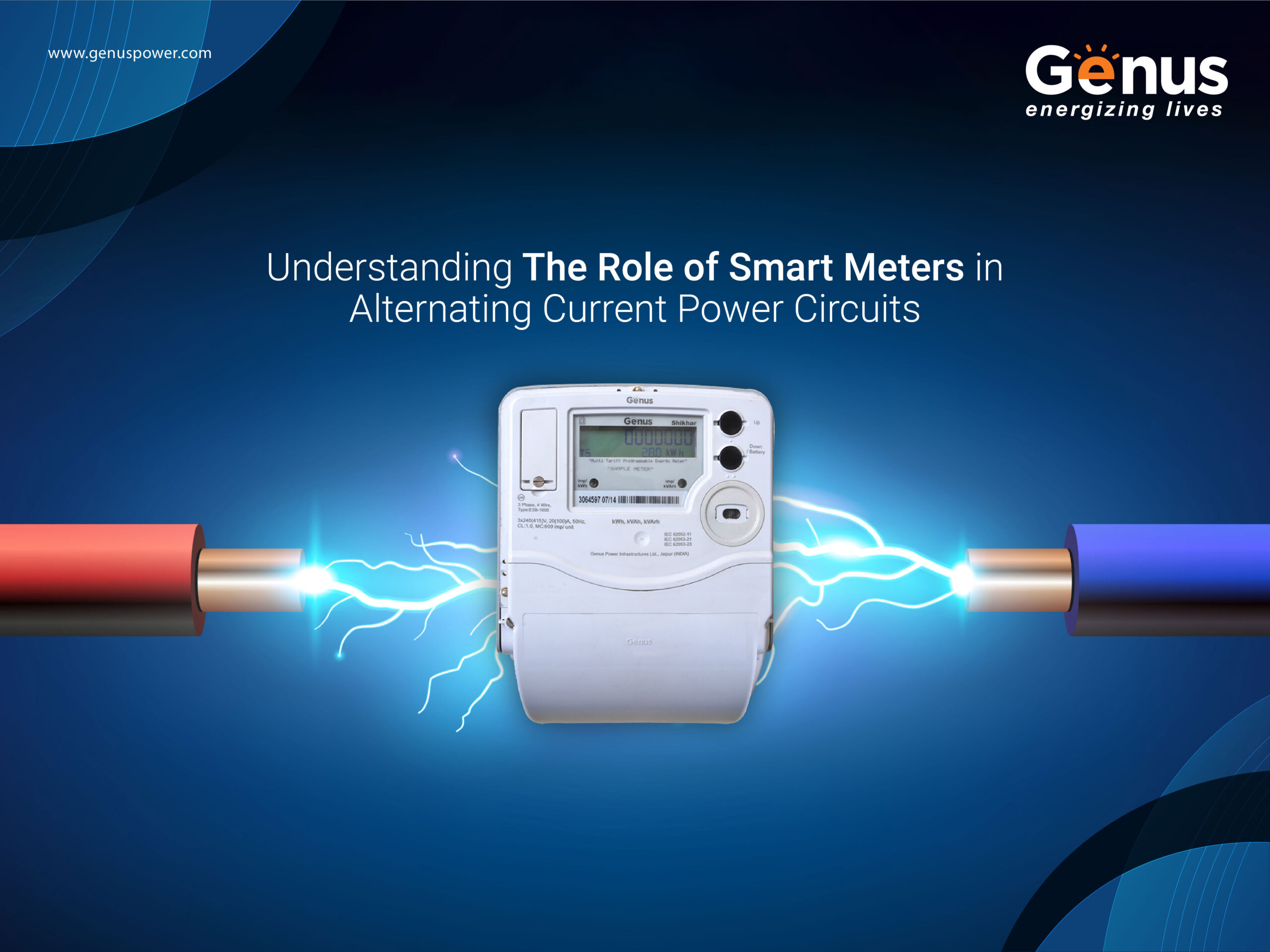
Did you know that the current electricity flowing through power circuit setups that we use is of two types, direct current and alternating current? Our electricity supply is heavily powered by alternating currents, but some devices also use direct currents. But since we are talking about alternating current in this post, let’s discuss that first.
In this post, we will be discussing the basics of alternating current, power factor, and the role smart meters play in optimizing your power infrastructure.
The power station supplies the electric current after passing through the distribution transformer metering, which accumulates and measures electricity passing through and into a distribution transformer, which is then supplied to our homes, offices, etc.
As already mentioned, the supplied current is of two types, direct and alternating current. An alternating current is one that changes the direction of current alternatively, and the direction of current varies with time, unlike a direct current, which characterizes the constant direction of flow of current.
An AC power circuit involves three main components, namely, resistors, capacitors, and inductors. Power increases when an AC circuit contains the resistor and decreases when an inductor or capacitor is connected in series with the resistor.
A power factor of an alternating current circuit can be described as the ratio of true power dissipated to the apparent power dissipated in the circuit. The value of the power factor of an ac circuit lies between 0 and 1.
A smart meter is an environmentally friendly energy meter that measures electrical energy in terms of kWh (kilowatt-hours). Smart meters, like the genus meter, uses utilizes advanced technologies, delivering energy consumption information wirelessly through low-energy frequency waves.
The usage data is communicated to the utility provider automatically in shorter spans and as frequently as 10 to 15 minutes. And the best part? Your electricity consumption data is also made available to customers, unlike traditional metering devices.
Alternating current travels in the form of waves, and in the case of unsynced voltage and current waves, power distortion happens, resulting in inefficiencies, thus creating a difference between real power and reactive power.
Now, you may ask, what real and reactive power is?
So, real power is the power that is required to run applications, measured in kWh (kilowatt-hours). Reactive power is actually the byproduct of the phase displacement occurring between the current and amp, measured as kilovolt-amperes reactive (kVAR). Total or apparent power is the sum of both real and reactive power, measured in kilovolt-amperes (kVA).
Here comes the most interesting part, the power factor!
The power factor is the ratio of real power to total (or apparent) power. The power factor is what determines the efficiency of any building’s electric power framework. The most efficient systems have power factors closest to 1.0, so the higher the power factor of your building, the greater the efficiency of your operating electric system.
So, why maintaining a higher power factor is important?
Utility providers base their electricity charges on the infrastructure required to maintain the right flow of power supply, thus keeping various power circuit setups active. If any commercial or residential building is not using supplied electricity optimally (which means your current electricity setup has a low power factor), there are high chances that you might be paying a power factor penalty (if your current power factor lies below 0.85).
WHY?
Because higher power loads with lower power factor typically draw a large amount of current and thus creates a huge power drain on the power supply source. Thus, demanding higher power production and transmission capacity to manage the demand.
Smart meters, like genus meter devices, are equipped with the latest features that give insights into the quality of electric power coming into your building. It provides measurements of metrics: real power, reactive power, apparent or total power, voltage, and frequency.
Now, for instance, if you calculate and find a lower power factor through your meter readings, it means you are paying the penalty and need to take corrective action. Poor power factor could lead to reduced lifespans of appliances by approximately 60%.
Smart meters are generally two types: single-phase and three-phase meters. Owing to increasingly affordable and lower single-phase meter and single phase meter box price rates, securing your home with smart metering technology has become highly approachable nowadays.
If your office or home has costly appliances and equipment, you would want to ensure the safety and efficiency of your entire electrical system, right?
This is where smart meters by Genus come into play, that is capable of monitoring and providing information about voltages, frequencies, harmonic distortion, transients, noise, oscillations, etc.
In addition to affordable single-phase meters, Genus also offers three-phase meters and 3 phase meter panel board setups to help you secure your home with smart metering technology has become highly approachable nowadays.
So, now that you know how smart meters can ensure the safety of your home and finances, switching to smart metering technology must be a wise choice. And in that context, contact us today to learn more about our advanced metering solutions and product offerings.